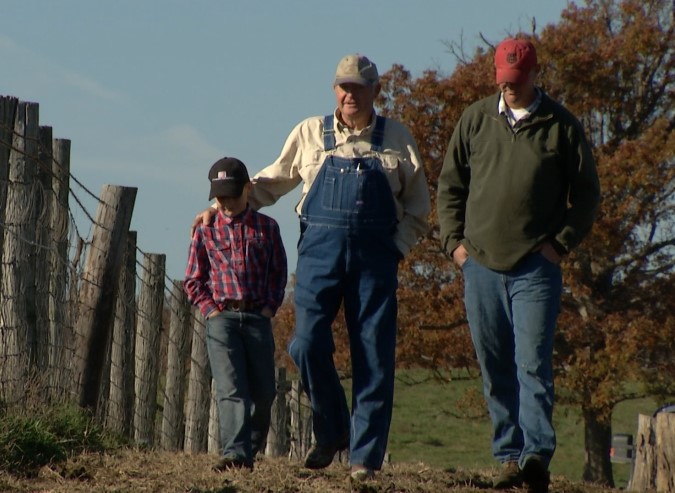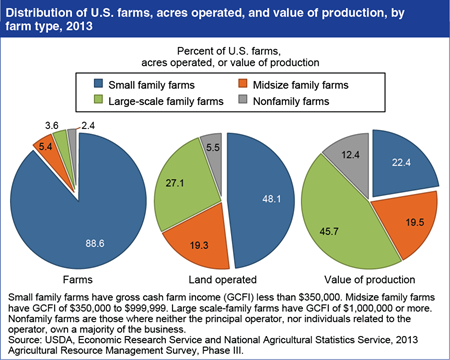The average age of the American farmer has been stuck at 57.5 since 2017 and hasn’t seemed to budged into 2021 despite an explosion of new farmer operators choosing to quit their pandemic day jobs and head for the fields to participate in small plot farming and local market vending. Generationally, the unfortunate circumstance with an aging farmer population and high land values equates to what Agricultural Economics Professor Dr. Shannon Ferrell of OSU found: Research at OSU is showing that fewer than 30 percent of farms and ranches are surviving intact in the first generation of transfer and even some estimates show that number is closer to 10 -20 percent. If you look at multiple generations, the numbers shrink even more to 12 percent and three
Topics:
Michael Smith considers the following as important: Aging farmers, Michael Smith, US agriculture, US EConomics
This could be interesting, too:
NewDealdemocrat writes JOLTS revisions from Yesterday’s Report
Bill Haskell writes The North American Automobile Industry Waits for Trump and the Gov. to Act
Bill Haskell writes Families Struggle Paying for Child Care While Working
Joel Eissenberg writes Time for Senate Dems to stand up against Trump/Musk
The average age of the American farmer has been stuck at 57.5 since 2017 and hasn’t seemed to budged into 2021 despite an explosion of new farmer operators choosing to quit their pandemic day jobs and head for the fields to participate in small plot farming and local market vending. Generationally, the unfortunate circumstance with an aging farmer population and high land values equates to what Agricultural Economics Professor Dr. Shannon Ferrell of OSU found:
Research at OSU is showing that fewer than 30 percent of farms and ranches are surviving intact in the first generation of transfer and even some estimates show that number is closer to 10 -20 percent. If you look at multiple generations, the numbers shrink even more to 12 percent and three percent.

As inflation has persisted and galvanized as not transitory, the under 35 crowd that saw farming as a glamorous alternative to the 9-5 desk job that had been relocated to their bed and livings rooms has forced those back into the workforce with a keen realization that farming is not for everyone, the barriers to entry are steep, and the work is hard an under appreciated. Farming can be profitable, but it takes time and a bit of luck.
The stark reality is that the metrics haven’t changed. The USDA defines a young, small, or beginning farmer as one who is 35 or younger, makes less than $250,000 in revenue a year and/or has been farming for less than ten years. The allure of farming has attracted a little over 900,000 new farmers according to the most recent 2017 census, but the average age is not that far behind the average, clocking in at 46.3. The under 35 age group only makes up 8% of the total farmers who are new to the business.
Of the new entrants, around 80% that go through the farmer starter programs end up not pursuing further work in farming the first year. Newly forged farmers are allocated into two different categories, generational farmers, where the children of farmers set out on their own, and first generation farmers who have distant or no familial ties to agriculture. A survey in 2001 showed first generation farmers to be 36% with a more recent survey concluded in 2019 showed a decline down to 25% of farmers.
The issues at hand are twofold: the creeping age of the American farmer, and the decline of new entrants. Normal familial attrition has preserved the status quo even with record decline in the number of farms, with 12,000 farms lost between 2017 and 2018. New entrants who are younger are hard to come by. Land and equipment affordability also a major issue.
Anecdotally, we hear new entrants to the farmer starter programs to be mostly women, 25-40 years of age. We also hear new entrants of retirees, mostly men who take up vegetable farming. Fireman Greg retired and is now farming. David sold his business and is now farming. Jean and her husband split time farming and with grandkids. The 20 somethings that have little to no experience are not jumping in to farm.
As previously reported, land consolidation will lead to close to 220,000 farms by 2040, down from 2.1 million current. The majority of these changes will encompass the largest, best capitalized farms growing by double or triple the amount of land farmed, but the human capital growth will be on the small scale. This 2013 survey breaks down the distribution of who, and how much is being done relatively recently:

The amount of land operated by 2040 will dramatically shift away from a healthy mix, to consolidation toward non-family farms and large scale family operations with the majority of the gains coming from small, and medium sized family farms.
This has not been lost on the ag community or lawmakers in general. Farm Bills in the past have tried to address the shortage, barriers to entry mostly, to promote new entrants who want to grow food. For the upcoming Farm Bill 2023, Congress is planning to push this to provide access to first time farmers with either a land grant program, or new loans. Congress also should address the USDA and the multitude of programs offer through USDA direct through loans or grants, or through the multiple arms through FSA, NRCS, ect. There are also state programs through local Departments of Agriculture.
Much in the same vein as was proposed for dealing with upfitting meat processors to compete with the large behemoths that control 80% of that market, we can incentivize small and beginning producers with grants to procure rented land, provide low interest loans to acquire land and equipment, and also create a public partnership with local producers. We have the means and pathways to not allow massive consolidation of cropland much like we have seen protein processing over the past few decades. We need the political will to tell these deep pocket corporations, no thanks.
